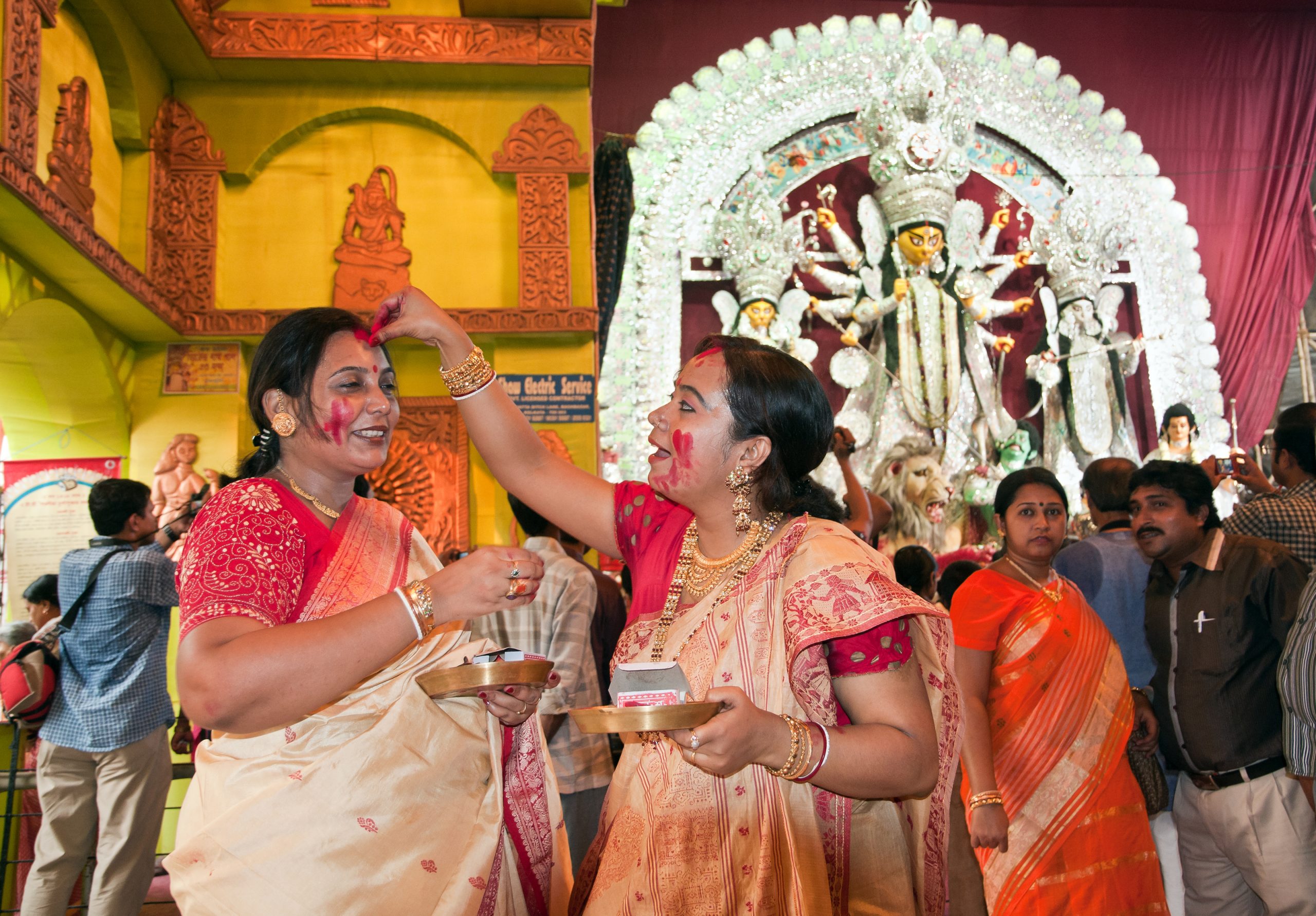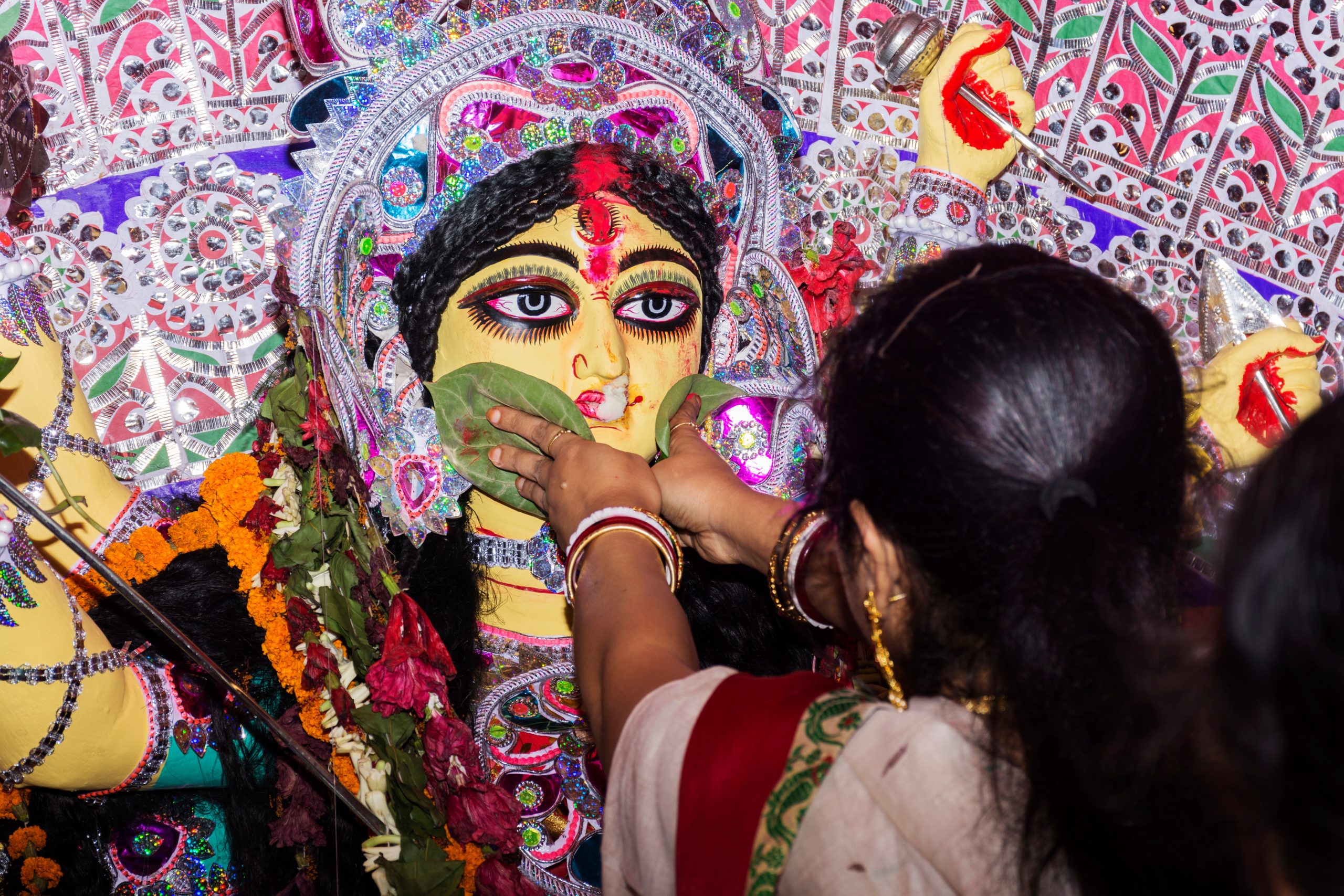Published By: Nibandh Vinod
Last Updated: October 23, 2023, 18:30 IST
Durga Puja 2023: This year, Sindoor Khela ritual will be observed on Tuesday, October 24. (Image: Shutterstock)
Durga Puja ends on Vijay Dashami, with the goddess bidding farewell. While people prepare for the visarjan, the women observe a symbolic ritual known as Sindoor Khela.
Durga Puja is one of the most anticipated festivals for the Bengali community and celebrated with great grandeur in Eastern India. The cities are lit for these five days, and at every corner, there is a uniquely designed pandal or themed pandals. From pandal hopping to relishing on some lip-smacking cuisines, the festivity is filled with several rituals.
The festival ends on the day of Vijay Dashami, with the goddess bidding farewell. While people prepare for the visarjan (immersion), the women observe a symbolic ritual known as Sindoor Khela. This year, the ritual will be observed on Tuesday, October 24.
What is Sindoor Khela?
Bengali women, usually adorned in white saree with red borders, begin the rite by performing Devi Baran to give a farewell to the goddess. They do an arti and apply sindoor on the goddess’s forehead and foot one by one and present her with sweets.
ALSO READ: Vijayadashmi 2023: Happy Dussehra Wishes 2023, Quotes, Images & Photos, WhatsApp Status
After Devi Baran, they apply sindoor on each other’s foreheads and hair parts, then shankha, pola, and noa (three bangles made of conch shells, coral, and iron, respectively that represent Bengali women’s marital status).
They are also expected to apply sindoor to the feet of the older women in the group. They then smear sindoor on one another’s faces in a playful and meticulous manner.
As for the origins of the rituals, it is believed that it started with the puja itself some 400 years ago. Other folktales say it is believed that the custom began roughly 200 years ago in the mansions of landlords (zamindars), who held grand Durga Puja ceremonies.
Why Married Bengali Women Play Sindoor Khela?
This is mostly performed by married women who believe that observing this ritual will bring good luck for them and a long life for their spouses. Sindoor (vermillion) is an orange or red powder prepared traditionally from lime, alum, and turmeric, a common element seen in Indian households. In traditional Hindu homes, the powder is an auspicious symbol for married ladies. During a Hindu wedding, the groom places sindoor on the bride’s parted hair on her forehead.
The ceremony has generated a festive environment among the women, similar to Holi, the festival of colours in the present time. As per tradition, young girls, unmarried women, and widows were not permitted to participate in this celebration.
The centuries-old ritual is beginning to alter in modern times. Many pandal committees have begun to invite all women, regardless of whether they are married or not, to participate in the ritual.


























